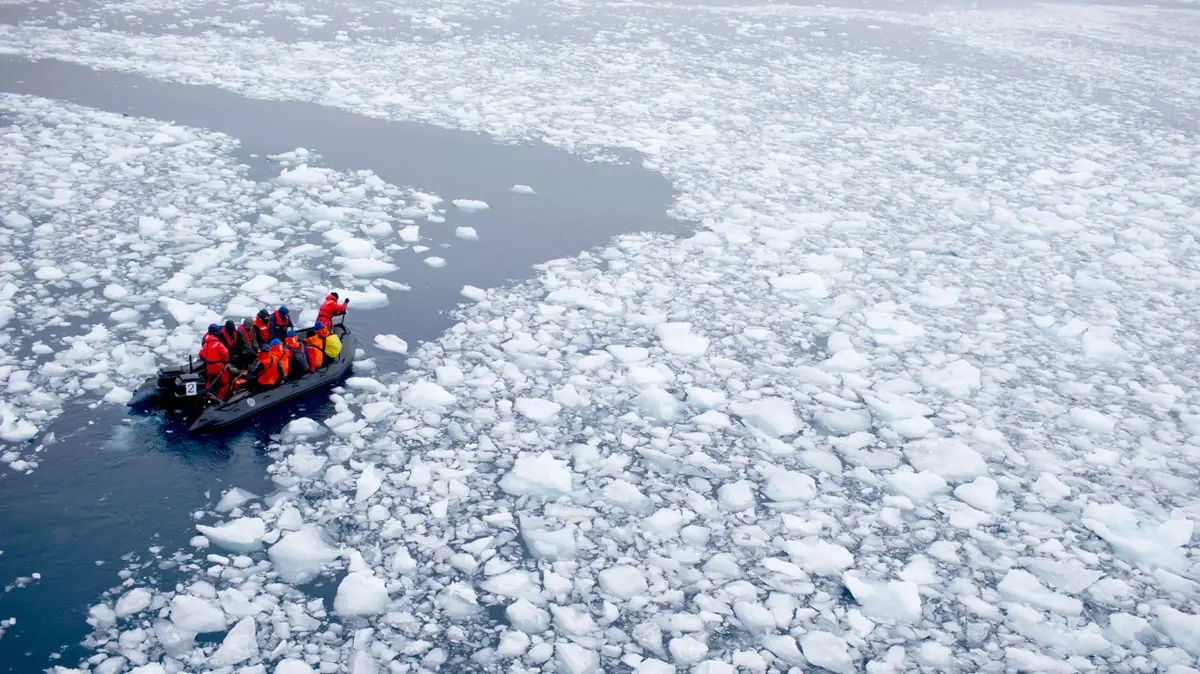The next corona: what is hidden under the glaciers in Antarctica - and how dangerous is it?
Antarctica is considered the most intriguing continent from a scientific point of view, mainly due to its remoteness and the fact that it is frozen.
With the melting of the glaciers, researchers are beginning to discover new bacteria and viruses that may endanger the world we know
Voila system!
health
10/19/2022
Wednesday, October 19, 2022, 5:19 p.m. Updated: Thursday, October 20, 2022, 5:17 p.m.
Share on Facebook
Share on WhatsApp
Share on Twitter
Share by email
Share in general
Comments
Comments
What awaits us?
Melting glaciers in Antarctica (Photo: AP)
It was the last continent that the corona reached, and it will probably be the first to launch the next deadly virus towards the world.
In fact, as the world warms and the melting of glaciers continues, the Arctic region may become a "fertile ground" for new viral epidemics, with climate change increasing the risk of the next Ebola, flu or corona that will probably arrive much sooner than we think.
In a new study published in Proceedings of the Royal Society B: Biological Sciences, researchers examined soil and sediment from Lake Hazen, the largest lake north of the Arctic Circle.
Using sequence segments of DNA and RNA found in the soil, the scientists sought to identify the pool of viruses present in the environment.
By the way, in order to understand the connection between global warming and diseases that still await us, it is important to know that a rise in temperatures at a similar rate preceded, for example, the great epidemic of dysentery in the 40s of the 14th century.
And there are researchers who believe that in 1340 a warming of one and a half degrees - probably caused by solar flares or volcanic activity - changed the life cycle of the bacterium Yersinia pestis.
A difference of one and a half degrees allowed this tiny bacterium to become the black plague that killed hundreds of millions of people in the world.
View this post on Instagram
A post shared by GlacierHub (@glacierhub)
Using a computer algorithm, the researchers examined the relationship of the viruses with hosts of animals, plants and fungi found in the area.
The team was able to understand the risk of viral spillover: that is, the ability of viruses to flood into new host species and continue to spread, as SARS-CoV-2 did by moving from wild animal populations to humans.
"The risk of sliding increases with runoff from melting glaciers, a proxy for climate change," the researchers write in the article.
"If climate change also shifts the species range of vectors and potential viral reservoirs to the north, the area could become fertile ground for developing epidemics."
good to know (in advance)
Smoother skin after just one use with a revolutionary device for home care
Served on behalf of B Cure Laser
A third of the Arctic Ocean's ice is gone
During the study, the researchers compared the evolutionary path of both viruses and hosts, looking for variations and similarities between the two - comparisons that indicate the possibility of a change in the status quo and the possibility of subsequent viral spillover.
"From an evolutionary point of view, viruses are more likely to infect hosts that are phylogenetically close to their natural host, perhaps because it is easier for them to infect and colonize in genetically similar species," the researchers explain.
The northernmost regions of the frozen continent are one part of the world most vulnerable to climate change.
Over the past few decades, a third of the Arctic Ocean's ice has disappeared.
At the same time, scientists also warn against an increased risk of epidemics caused by several factors, including human activity that destroys natural habitats and forces animals and people to live in ever closer places.
new bacteria.
Petri dish (Photo: ShutterStock)
The urgent need to understand the relationship between changing habitats and proximity to new disease sources underpins the research, and realizing that global warming may cause species to move further north to maintain an environment with the same type of temperatures, the potential for viruses to jump into new species increases even more.
"This double effect of climate change, both increasing the risk of drifting and leading to a change in the species' ranges in the various regions, may have dramatic effects in the high Arctic," the researchers write.
This is not the first study that takes place in the remote continent that has intrigued researchers since time immemorial.
It is currently unclear what, if any, new viruses have been discovered, but it is clear that the melting of the glaciers will release viruses that have been kept frozen for hundreds of thousands of years.
health
news
Tags
Corona
global warming
germs
Antarctica

